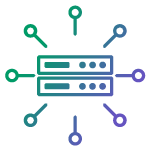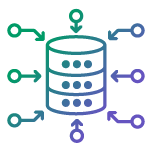Softjourn's Expertise in Secure PSD3 and Open APIs runs deep
We have extensive experience optimizing governance, risk management, regulatory compliance, and cybersecurity with advanced analytics and APIs. For Open Banking, we’re experts at solving your toughest challenges and ensuring you’re PSD3 and PSR-compliant. Contact us when you’re ready to take your financial services to the next level.
Open API, PSD3, and Open Banking Standards

All businesses that store, process, or transmit payment card data must comply with the Payment Card Industry Data Security Standard.
As a result, PSPs are reassessing how they operate. In particular, how they introduce changes to handle customer data, communicate with third parties, and manage risk and security. Many will need support in complying with PSD3 and PSR standards. We can help implement them, accelerate compliance, and use the standards to expand your business.

Open APIs help businesses transform their platforms into ecosystems. Our developers can build complementary applications, enhance the functionality of your existing applications, and deliver measurable value—often accelerating product development cycles at minimal cost.
Overloading an API with unnecessary endpoints or features can create inefficiencies, security risks, and reduced performance. Our goals are to develop secure APIs aligned with core business objectives, ensuring they enhance rather than complicate an application’s ecosystem.

One benefit is how easily it facilitates the stressful, tedious process of switching from one bank’s checking account service to another. Open Banking can also look at a customer’s transaction data to identify the best financial products and services.
Through networked accounts, Open Banking can yield a more accurate snapshot of a consumer’s finances and risk level, enabling lenders to offer favorable loan terms. It gives consumers a clearer view of their finances before taking on debt. Small businesses can use Open Banking to save time through online accounting, more effective fraud detection, and faster problem identification.
Want to know more about PSD3 and Open APIs?
PSD3 opens attractive opportunities. We’ll help you take advantage of them.
Some see PSD3 as a disruption, but we see it as an opportunity for our clients. Our solutions embrace the idea that these regulations can empower security, innovation, and better customer service. Here’s how:
- Strengthen consumer protection
- Develop new payment solutions
- Regulate new market players
- Establish uniform card payment fees in line with the EC MIF (the regulation on interchange fees for card-based payment transactions)
- Increase competitiveness
- Overcome differences between the disciplines of EU Members
- Increase efficiency through standardized infrastructures

PSD3: A New Era for Payments Regulation
The Third Payment Services Directive (PSD3) and its companion Payment Services Regulation (PSR) mark the EU’s next major step in harmonizing the payments landscape. Introduced by the European Commission in 2023, this new framework builds on PSD2 to strengthen consumer protection, enhance competition, and improve security across Europe’s financial ecosystem.
1. Transparency and Consumer Protection
PSD3 raises the bar for transparency and user rights. It introduces clearer disclosures on fees and exchange rates, better visibility for payee information (such as IBAN checks), and stronger refund rights for victims of fraud. These measures aim to build greater consumer confidence and simplify cross-border payments.
2. Security and Resilience
Beyond PSD2’s strong customer authentication (SCA) rules, PSD3 adds shared fraud data systems, stronger identity verification requirements, and more robust operational resilience standards. It also expands supervision over instant-payment providers to ensure reliability in real-time transactions.
3. Access and Competition
Banks must continue to provide secure APIs to third-party providers (TPPs), while improving performance standards, adopting standardized data formats, and introducing new consumer consent dashboards. Fintechs and non-bank PSPs will gain greater direct access to payment systems, while electronic money institutions (EMIs) will be brought under a single authorization regime to reduce fragmentation.
Timeline and Next Steps
The European Parliament adopted its first-reading position in April 2024, and the Council approved its negotiating mandate in June 2025. Trilogues are ongoing, with adoption expected by late 2025. Member States will have roughly 18 months to transpose PSD3, placing full implementation around 2026–2027.
Why It Matters
PSD3 2.0 is not just an update—it reshapes Europe’s financial services landscape. By creating consistent rules, modernizing SCA, and expanding access through open finance, it aims to balance innovation with security and ensure Europe remains at the forefront of digital payments.
A comprehensive and secure scope of work

- We define vision, business requirements, user requirements, constraints, current state, and risks, as well as elicitation interviews and document analysis. Our goal is to understand your business processes and goals so we can provide the APIs, services, and coverage you need.
- Based on the information analyzed during the previous step, we can identify user classes of the APIs, along with their needs and expectations. We conduct elicitation interviews and focus groups with each user class, potentially including developers and subject matter experts depending on the project.
- We record all results. This output document includes business requirement statements, a list of services and descriptions, and a list of user classes with overview of needs/expectations.

- We identify current features including a detailed analysis of the API documentation, creating lists of available features, then testing them for feasibility and completeness.
- We analyze the features of competitors’ APIs and other similar products based on the services and user classes identified in previous steps. Then we create a list of those features.
- We conduct comparison analysis of similar organizations. We also identify features not available in the client’s API that might bring value to end users.
- We identify and specify use cases. Based on the services analysis, we pinpoint possible use cases from the needs of each user class. Each use case will describe user requirements and quality expectations. This will require focus groups and brainstorm sessions with each user class. It may include developers and subject matter experts.
- We run use cases to identify gaps in the API. This includes step-by-step simulation of each use case described in the previous step. Results and observations will be documented.
- We analyze the current API for PSD2 compliance and verify accordance, as well as the limitations of PSD2 regulations and technical standards.
- We document results. The output document will contain analysis of current API features, a suggested list of features that can be added, a general conclusion, and PSD2 suggestions.
Engagement Models
What We Offer
Whether upgrading an existing code or creating a new one, the most important expertise we offer is a proven approach to mitigating risk and containing costs. Discover more about Softjourn's expert Consulting Services.
Often clients don’t know what product they need, but do know the results they want. Our job is to help define the product and develop optimal solutions to get those results. Learn more about Softjourn's Discovery Phase Services.
To compete, our clients continually need to provide new and better services. We have our own R&D Centers – started in 2008 – which uniquely positions us to do just that. Read more about Softjourn's Research and Development Services.
Our developers and illustrators are experts at UI and UX design. They will work with you to understand your needs in going from idea to prototype to deployment faster and at less cost. Explore further into Softjourn's Digital Product Design Services.
Software development has grown exponentially in recent decades. Softjourn is the solution to help you define and develop forward-thinking technology that gets real-world results. Get to know more about Softjourn's Software Engineering Services.
Our core belief is that analyzing and testing is critical because the essential role of software is so important. In the process, our Quality Assurance team helps you create superior products. Explore further into Softjourn's QA services.
Since day one, we’ve been providing application support and maintenance services to each customer on every project. It’s why we’re a proven, trusted partner and reliable asset. Get to know more about Softjourn's Application Support and Maintenance Services.
Our technology stack at Softjourn is designed to empower us to deliver world-class services to our clients. With a strong focus on innovation and efficiency, we continually adapt our expertise to stay ahead of the curve. Discover the Technologies and Frameworks we utilize, and learn how we can bring your ideas to life.









